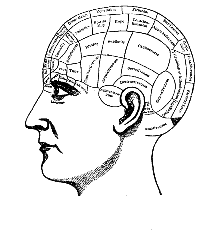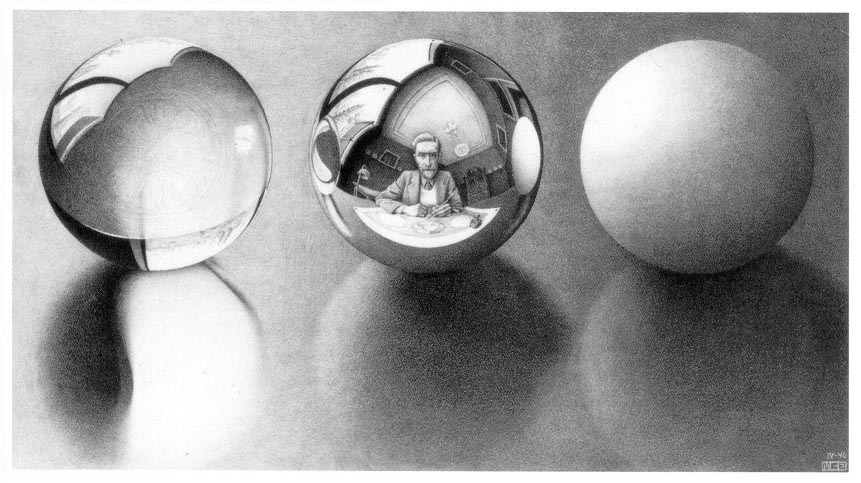
My wife pulled into the garage yesterday after a shopping trip and called me out to her car to catch the tail end of a vignette on NPR about the Theater of Memory tradition Frances Yates rediscovered in the 60’s — a subject my wife knows has been a particular interest of mine since graduate school. The radio essayist was discussing his attempt to create his own memory theater by forming the image of a series of rooms in his mind and placing strange mnemonic creatures representing different things he wanted to remember in each of the corners. Over time, however, he finally came to the conclusion that there was nothing in his memory theater that he couldn’t find on the Internet and, even worse, his memory theater had no search button. Eventually he gave up on the Renaissance theater of memory tradition and replaced it with Google.
I havn’t read Yates’s The Art of Memory for a long time, but it seemed to me that the guy on the radio had gotten it wrong, somehow. While the art of memory began as a set of techniques allowing an orator to memorize topics about which he planned to speak, often for hours, over time it became something else. The novice rhetorician would begin by spending a few years memorizing every nook and cranny of some building until he was able to recall every aspect of the rooms simply by closing his eyes. Next he would spend several more years learning the techniques to build mnemonic images which he would then place in different stations of his memory theater in preparation for an oration. The rule of thumb was that the most memorable images were also the most outrageous and monstrous. A notable example originating in the Latin mnemonic textbook Ad Herennium is a ram’s testicles used as a place holder for a lawsuit, since witnesses must testify in court, and testify sounds like testicles.
As a mere technique, the importance of the theater of memory waned with the appearance of cheap paper as a new memory technology. Instead of working all those years to make the mind powerful enough to remember a multitude of topics, topics can now be written down on paper and recalled as we like. The final demise of the theater of memory is no doubt realized in the news announcer who reads off a teleprompter, being fed words to say as if they were being drawn from his own memory. This is of course an illusion, and the announcer is merely a host for the words that flow through him.
A variation on the theater of memory not obviated by paper began to be formulated in the Renaissance in the works of men like Marsilio Ficino, Giulio Camillo, Giordano Bruno, Raymond Lull, and Peter Ramus. Through them, the theater of memory was integrated with the Hermetic tradition, and the mental theater was transformed into something more than a mere technique for remembering words and ideas. Instead, the Hermetic notion of the microcosm and macrocosm, and the sympathetic rules that could connect the two, became the basis for seeing the memory theater as a way to connect the individual with a world of cosmic and magical forces. By placing objects in the memory theater that resonate with the celestial powers, the Renaissance magus was able to call upon these forces for insight and wisdom.
Since magic is not real, even these innovations are not so interesting on their own. However the 18th century thinker, Giambattista Vico, both a rationalist and someone steeped in the traditions of Renaissance magic, recast the theater of memory one more time. For Vico, the memory theater was not a repository for magical artifacts, but rather something that is formed in each of us through acculturation; it contains a knowledge of the cultural institutions, such as property rights, marriage, and burial (the images within our memory theaters), that are universal and make culture possible. Acculturation puts these images in our minds and makes it possible for people to live together. As elements of our individual memory theaters, these civilizing institutions are taken to be objects in the world, when in actuality they are images buried so deeply in our memories that they exert a remarkable influence over our behavior.
Some vestige of this notion of cultural artifacts can be found in Richard Dawkins’s hypothesis about memes as units of culture. Dawkins suggests that our thoughts are made up, at least in part, of memes that influence our behavior in irrational but inexorable ways. On analogy with his concept of genes as selfish replicators, he conceives of memes as things seeking to replicate themselves based on rules that are not necessarily either evident or rational. His examples include, at the trivial end, songs that we can’t get out of our heads and, at the profound end, the concept of God. For Dawkins, memes are not part of the hardwiring of the brain, but instead act like computer viruses attempting to run themselves on top of the brain’s hardware.
One interesting aspect of Dawkins’s interpretation of the spread of culture is that it also offers an explanation for the development of subcultures and fads. Subcultures can be understood as communities that physically limit the available vectors for the spread of memes to certain communities, while fads can be explained away as short-lived viruses that are vital for a while but eventually waste their energies and disappear. The increasing prevalence of visual media and the Internet, in turn, increase the number of vectors for the replication of memes, just as increased air-travel improves the ability of real diseases to spread across the world.
Dawkins describes the replication of memetic viruses in impersonal terms. The purpose of these viruses is not to advance culture in any way, but rather simply to perpetuate themselves. The cultural artifacts spread by these viruses are not guaranteed to improve us, no more than Darwinian evolution offers to make us better morally, culturally or intellectually. Even to think in these terms is a misunderstanding of the underlying reality. Memes do not survive because we judge them to be valuable. Rather, we deceive ourselves into valuing them because they survive.
How different this is from the Renaissance conception of the memory theater, for which the theater existed to serve man, instead of man serving simply to host the theater. Ioan Couliano, in the 80’s, attempted to disentangle Renaissance philosophy from its magical trappings to show that at its root the Renaissance manipulation of images was a proto-psychology. The goal of the Hermeticist was to cultivate and order images in order to improve both mind and spirit. Properly arranged, these images would help him to see the world more clearly, and allow him to live in it more deeply.
For after all what are we but the sum of our memories? A technique for forming and organizing these memories — to actually take control of our memories instead of simply allowing them to influence us willy-nilly — such as the Renaissance Hermeticists tried to formulate could still be of great use to us today. Is it so preposterous that by reading literature instead of trash, by controlling the images and memories that we allow to pour into us, we can actually structure what sort of persons we are and will become?
These were the ideas that initially occurred to me when I heard the end of the radio vignette while standing in the garage. I immediately went to the basement and pulled out Umberto Eco’s The Search For The Perfect Language, which has an excellent chapter in it called Kabbalism and Lullism in Modern Culture that seemed germane to the topic. As I sat down to read it, however, I noticed that Doom, the movie based on a video game, was playing on HBO, so I ended up watching that on the brand new plasma TV we bought for Christmas.
The premise of the film is that a mutagenic virus (a virus that creates mutants?) is found on an alien planet that starts altering the genes of people it infects and turns them into either supermen or monsters depending on some predisposition of the infected person’s nature. (There is even a line in the film explaining that the final ten percent of the human genome that has not been mapped is believed to be the blueprint for the human soul.) Doom ends with “The Rock” becoming infected and having to be put down before he can finish his transformation into some sort of malign creature. After that I pulled up the NPR website in order to do a search on the essayist who abandoned his memory theater for Google. My search couldn’t find him.

